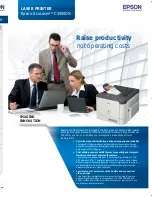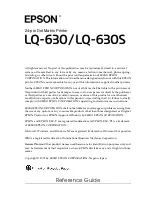
Just in case …
Memory — Internal document storage. In Olympia fax machines, random access memory in
the form of computer chips is used to store and hold documents for transmission and to hold
some documents that have been received.
Memory overflow — A message that appears on the machine’s
LCD
when the current opera-
tion requires more of the machine’s electronic memory than what is available.
MH
— Modified Huffman, the standard
ITU
-
T
Group 3 data compression method. A one-dimen-
sional coding scheme that compresses data in a horizontal direction only.
MH
assures
transmissions faster than one page per minute when communicating with other Group 3
units, regardless of manufacturer. See also
MR
,
MMR
.
Military format — See 24-hour format.
Modem — Modulator-demodulator. A device that converts digital data, like information from
a fax machine, into an analog signal for transmission over ordinary telephone lines. A modem
is included in a fax machine and allows it to be connected directly to a
PSTN
telephone line.
MR
— Modified Read, an
ITU
-
T
Group 3 standard data compression method. A two-dimen-
sional coding scheme that compresses data in both horizontal and vertical directions and
allows for faster transmission when communicating with other Group 3 units, regardless of
manufacturer. See also
MH
,
MMR
.
MMR
— Modified Modified Read, an
ITU
-
T
Group 3 standard data compression method. A two-
dimensional coding scheme that compresses data in both horizontal and vertical directions
and allows for faster transmission when communicating with other Group 3 units, regardless
of manufacturer. See also
MH
,
MR
.
Monitor — A speaker which can allow the user to hear the dialling process. This is not a
speakerphone, because it has no microphone for speaking to the person being called. For reg-
ular two-way voice communication, users must use the telephone attached to the machine.
See also On-hook dialling.
Normal resolution — Shown as “norm”; 203
H
×
98
V
lpi.
One-touch dialling — Allows the fax user to store frequently used fax numbers for dialling
with the touch of one key. See also Autodialling and Speed-dialling.
On-hook dialling — Dialling numbers by using the keypad on the fax unit without lifting a
handset. On this fax machine, the user can do this either silently or by using the monitor. See
also Monitor.
Original document size — The largest (or smallest) document that can be fed safely
through a fax machine.
Override — To change existing settings.
Paper sizes — All are width
×
length:
Letter-sized = 8.5
″ ×
11.0
″
(216
×
279 mm)
Legal-sized = 8.5
″ ×
14.0
″
(216
×
356 mm)
A5 = 5.8
″ ×
8.3
″
(148
×
210 mm)
B5 = 7.2
″ ×
10.1
″
(182
×
257 mm)
A4 = 8.3
″ ×
11.7
″
(210
×
297 mm)
B4 = 10.1
″ ×
14.3
″
(257
×
364 mm)
A3 = 11.7
″ ×
16.5
″
(297
×
420 mm)
Passcode — A four-digit code-number. On your fax machine, the protection passcode lets the
user limit access to fax operations, as well as certain settings and even documents readied for
polling (in the case of polling, only calling machines whose users enter the proper passcode
will be able to poll the document.)
PBX
(or
PABX
) — Private branch exchange; privately-owned telephone equipment serving a
particular building, business or area. Many
PBX
systems use digital transmission lines which,
unlike more common
PSTN
lines, are not compatible with fax machine use. The user should
not connect a fax unit to a
PBX
without first checking with the system manufacturer or ser-
vice representative.
PCL — Page Control Language. An industry standard for printer control. Some fax machines
include or offer PCL-compatible printing for Windows-based personal computers.
Platen — A traditional copier-style top to a fax machine or digital copier. Some fax machines
and multifunctional products include a platen top, allowing you to fax from books and other
awkward sources.
Polling — Automatic transmission to a calling remote fax, or reception of a document from a
remote fax set for this operation. Polling is convenient whenever a central unit must receive
information from one or several remote faxes. The caller bears all telephone charges and pre-
vents several remote units from calling at the same time. See also Secure polling.
Private line — (Or leased line.) A service offered by many telephone systems; provides an
exclusive phone circuit between two geographic points. A Olympia fax does not require a pri-
vate line. See also
PSTN
.
Proprietary — Non-standard. In fax, refers to a fax feature which works only in communi-
cations between fax machines that are the same brand.
PSTN
— Public switched telephone network; the most common type of telephone lines and
service in use, in contrast to private or leased lines. An Olympia machine provides fast, reli-
able data transmission over a
PSTN
line, and does not need a special or dedicated telephone
line. See also Private line.
RCR
— Receive confirmation report. An
RCR
is your assurance that the document you trans-
mitted was received. The
RCR
prints after your transmission, identifying the receiving unit
and recording the date, time, transmission mode, number of pages sent and the result. The
RCR
is an exclusive feature of this fax machine and is available only when transmitting to
other compatible Olympia fax machine. See also
TCR
.
Receiver
ID
— See Station
ID
.
Redialling — The dialling again, either manually or automatically controlled, of the most
recently dialed fax or phone number. Automatic redialling follows an unsuccessful dialling
attempt and can be done manually or automatically.
5.19
Summary of Contents for OM 9812
Page 1: ...OM 9812 OM 9816 Operating Instructions Plain paper digital Copier Fax Printer Scanner...
Page 7: ...This page intentionally blank...
Page 52: ...2 21 Basic operation This page intentionally blank...
Page 124: ...Changing the default settings This page intentionally blank 4 13...
Page 146: ...Just in case This page intentionally blank 5 21...
Page 147: ...Appendix and index...
Page 154: ...D88 90290 60...











































